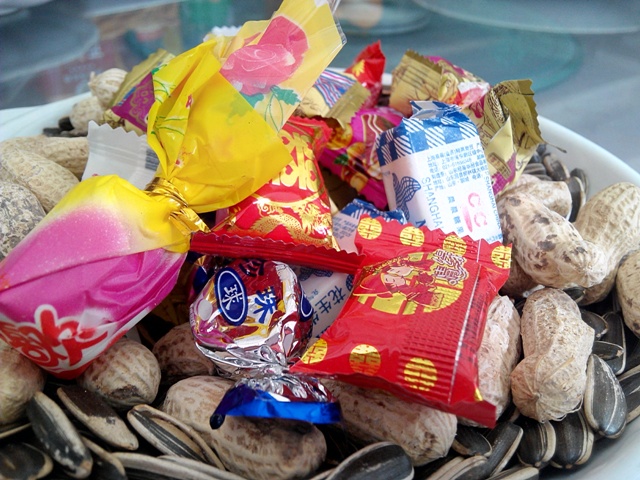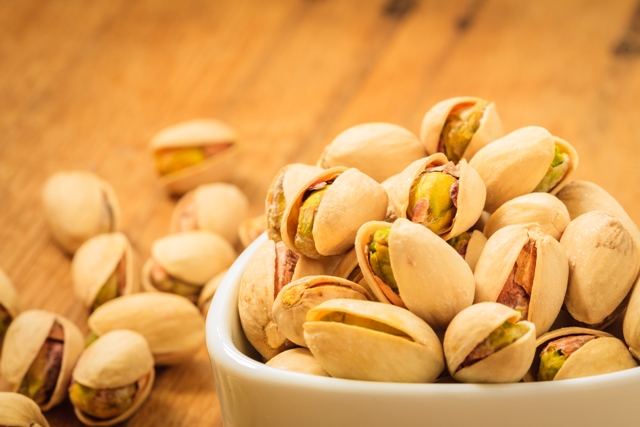To know more about the Pistachio Industry in China, contact us at dx@daxueconsulting.com
Pistachio Industry in China
The food and beverage market in China have grown steadily over the last decade. Between 2009 and 2014 it grew by 30% annually. Moreover, by 2018 the Association of Food Industries predicts that China will be the world’s largest consumer of imported food, with a value of 480 000 000 000 RMB. Accordingly, there has been an increase in the sale of nuts in China. The China National Food Industry Association recorded that in 2014 the sale of nuts and seeds was worth $17 290 000 000, accounting for one-third of the overall snacks market. Such is the insatiable demand for nuts that China’s ministry of finance felt comfortable to reduce import tariffs for certain types of nuts in 2015. The domestic supply could not support demand. Foreign imports, therefore, would not damage the domestic economy. Consequently, tariffs on pistachios and cashews were cut in half from 10% to 5%. This was to encourage foreign investment in order to satisfy a blossoming market. Indeed, 10% of the world’s pistachio nuts are devoured by Chinese consumers and China is now the world’s largest importer of pistachios. The demand for imported pistachio nuts to China is due to unique Chinese consumer behavior. This article will begin by exploring these behavior trends and before concluding it will detail the customer profile of Chinese pistachio consumers.
Health and Safety
 Chinese dietary requirements are changing and increasingly prioritizing health. The organic food market in China tripled between 2007 and 2015 and it appears this trend will continue. This has stimulated the Chinese pistachio market as the nut has nourishing attributes, being a high source of antioxidants, Vitamin-E, copper, potassium, calcium, iron, and magnesium. Indeed, the Chinese Nutrition Society in 2011 issued a dietary guideline report that recommended eating up to 10 grams of tree nuts daily for a healthy diet. Consequently, pistachio nuts are no longer viewed as a luxury product given as a present. Instead, 80% of Chinese pistachio consumption is now for personal consumption. Demand for pistachio nuts in China, therefore, is partly due to a newfound ambition of Chinese consumers to maintain a healthy lifestyle and diet.
Chinese dietary requirements are changing and increasingly prioritizing health. The organic food market in China tripled between 2007 and 2015 and it appears this trend will continue. This has stimulated the Chinese pistachio market as the nut has nourishing attributes, being a high source of antioxidants, Vitamin-E, copper, potassium, calcium, iron, and magnesium. Indeed, the Chinese Nutrition Society in 2011 issued a dietary guideline report that recommended eating up to 10 grams of tree nuts daily for a healthy diet. Consequently, pistachio nuts are no longer viewed as a luxury product given as a present. Instead, 80% of Chinese pistachio consumption is now for personal consumption. Demand for pistachio nuts in China, therefore, is partly due to a newfound ambition of Chinese consumers to maintain a healthy lifestyle and diet.
Chinese consumers are, however, wary of where their purchases are produced. Food quality in China has been found lacking in recent years and this has led to a certain skepticism amongst Chinese consumers over the source of their food and drinks. The results of a survey taken in 2014 across 20 Chinese cities convey that 80% of respondents were upset about the food sa
fety situation in China. This is hardly surprising when one considers that in 2008 six babies were killed and 300 000 left sickened after they drunk infant formula that had been contaminated with the industrial chemical melamine. This skepticism has impacted Chinese consumption of pistachio nuts from particular areas. The market shares for domestically produced pistachio nuts reduced below 50% in 2014 after it was publicized that suppliers had used sulfur, a toxic chemical, to color their pistachios appealingly. It has equally influenced which imported pistachio nuts Chinese consumers prefer. Although Iran is the largest pistachio producing country in the world, yielding 472 097 metric tons per year, the United States and Turkey import the most pistachio nuts to China annually. This is because the reputation of Iranian pistachio nuts was somewhat tainted after aflatoxin contamination was found in their nuts in 1997. The prominence of the fungus was such that the EU placed a ban on the imports of Iranian pistachios. There is demand for pistachio nuts in China because Chinese consumers are aiming to lead healthier lifestyles. They will not, however, choose to consume produce associated with contamination if they can afford safely imported options that are equally available. With domestic production associated with uncleanness and Iranian pistachios comparably distrusted, there is space in the market for foreign companies to successfully import their nuts. Thus far the vacuum has been effectively attended to by Turkish and Californian producers. Indeed, Californian imports of pistachio nuts to China have flourished. Between 2004 and 2013 Chinese purchases of Californian pistachios rose from $5 000 000 to $109 000 000. Nevertheless, as demand keeps increasing there is still room for innovation and competition from other parts of the world, providing they can prove and maintain the purity of their produce.
Consumer Profile
 To enter the Chinese market effectively, however, companies must comprehend their target market and how China’s demographics are predicted to develop. In 2011, the International Trade Centre suggested that China’s optimum market for selling organic food was to white collared workers in urban environments. This proposition is still valid for the contemporary Chinese pistachio market. Indeed, the per capita purchases of nuts are 2.5 times higher amongst urban residents than rural ones. Moreover, the Chinese government aims to have 60% of the Chinese population living in cities by 2020, when it was only 36% in 2000. Targeting urban consumers, therefore, is sensible as not only do they consume more nuts, but the numbers of urban residents in China is expected to keep growing. It is even predicted that by 2030, 70% of China’s population will live in urban areas. The only alteration to the International Trade Centre’s original assertion this article will make is that perhaps the market could expand beyond just white collared workers as the average disposable income of Chinese consumers rises. Average per capita household income in the first quarter of 2015 rose by 9.4% on the previous year. Meanwhile, the per-capita disposable income of urban residents rose by 8.3% in the same timeframe. It is clear that companies should target urban consumers. With the rise in disposable income of urban residents, however, the market for foreign pistachio nuts imported to China might not be limited to white collared workers in the future. On the contrary, considering a greater number of Chinese consumers are pursuing healthier diets and have a rising disposable income, the market for imported pistachio nuts in China’s cities might be very affluent.
To enter the Chinese market effectively, however, companies must comprehend their target market and how China’s demographics are predicted to develop. In 2011, the International Trade Centre suggested that China’s optimum market for selling organic food was to white collared workers in urban environments. This proposition is still valid for the contemporary Chinese pistachio market. Indeed, the per capita purchases of nuts are 2.5 times higher amongst urban residents than rural ones. Moreover, the Chinese government aims to have 60% of the Chinese population living in cities by 2020, when it was only 36% in 2000. Targeting urban consumers, therefore, is sensible as not only do they consume more nuts, but the numbers of urban residents in China is expected to keep growing. It is even predicted that by 2030, 70% of China’s population will live in urban areas. The only alteration to the International Trade Centre’s original assertion this article will make is that perhaps the market could expand beyond just white collared workers as the average disposable income of Chinese consumers rises. Average per capita household income in the first quarter of 2015 rose by 9.4% on the previous year. Meanwhile, the per-capita disposable income of urban residents rose by 8.3% in the same timeframe. It is clear that companies should target urban consumers. With the rise in disposable income of urban residents, however, the market for foreign pistachio nuts imported to China might not be limited to white collared workers in the future. On the contrary, considering a greater number of Chinese consumers are pursuing healthier diets and have a rising disposable income, the market for imported pistachio nuts in China’s cities might be very affluent.
The food and beverage industry in China is growing. In logical tandem, the market for nuts, and more specifically pistachio nuts, is increasing too. Huge demand has resulted in opportunities for foreign pistachio nut farmers to sell their produce in the Chinese market. Demand stems from a newfound trend amongst Chinese consumers to pursue a healthy diet. The specific demand for imported pistachios is because domestic production is trusted far less than foreign imports that have no association with food contamination. Furthermore, the market for pistachio nuts looks to be prosperous in the future. The target market that foreign pistachio nut producers should sell to are urban consumers with sufficient disposable income to spend on relatively expensive snacks. It appears that not only are the number of urban residents increasing but so too are their disposable incomes. Consequently, the pistachio nut market in China is an appealing investment opportunity for foreign producers. Demand is high and could increase in the future.
Industry Case: Nuts in China
A business in the nuts and dried fruits market wanted to launch its top line products in the Chinese market. It faced the challenge, however, of establishing an effective and compatible supply chain structure.Consequently, it looked to Daxue Consulting for advice.
Daxue developed a manufacturing strategy by leveraging insights into the country’s macroeconomic climate, the factor cost, and the strategic industry sector developments. Daxue Consulting provided a scenario evaluation of the client’s potential value chains, including its impact on the different elements, such as inventory and logistics.





